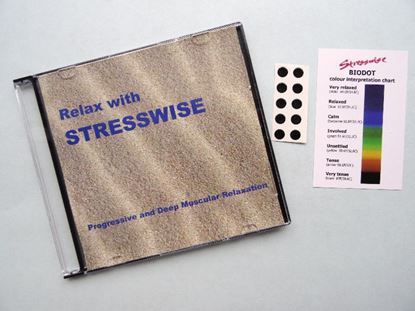Relaxation Audio
An audio guide to help you relax
A soothing male voice (in English) will lead you through two techniques on our cassette or CD: Progessive Muscular Relaxation (PMR) and Deep Muscular Relaxation (DMR).
Each CD comes with ten Biodots and a colour interpretation chart to help you monitor your progress.
About the techniques used
In PMR each of the main groups of muscles is tensed then relaxed in sequence, hence the name Progressive Muscular Relaxation (PMR). During each stage you are directed to concentrate first on the feeling of muscle tension and then on relaxation. With practice, you learn to be more aware of muscle tenseness so you can switch tension into relaxation. For example, many drivers find their shoulders hunched and hands gripping the steering wheel so tightly that the knuckles turn white. Through PMR, you will recognise this tension and consciously learn to relax the muscles, thus helping to reduce head, neck, shoulder and back tension.
When the body muscles are relaxed, the mind can more easily relax; this reduces the activity in one part of the nervous system, leading to a decrease in the heart rate and blood pressure. However, this technique is not recommended for sufferers of high blood pressure (hypertension). This is because the tensing of muscles causes elevation of the blood pressure (which then decreases when the muscles are relaxed). So if you suffer from hypertension it is wise not to increase your blood pressure further by tensing the muscles during PMR. Instead we advise you to practise Deep Muscular Relaxation (DMR). This technique follows the one for PMR but the muscles are not deliberately tensed prior to relaxing. Instead a conscious attempt is made to further relax the muscles.

